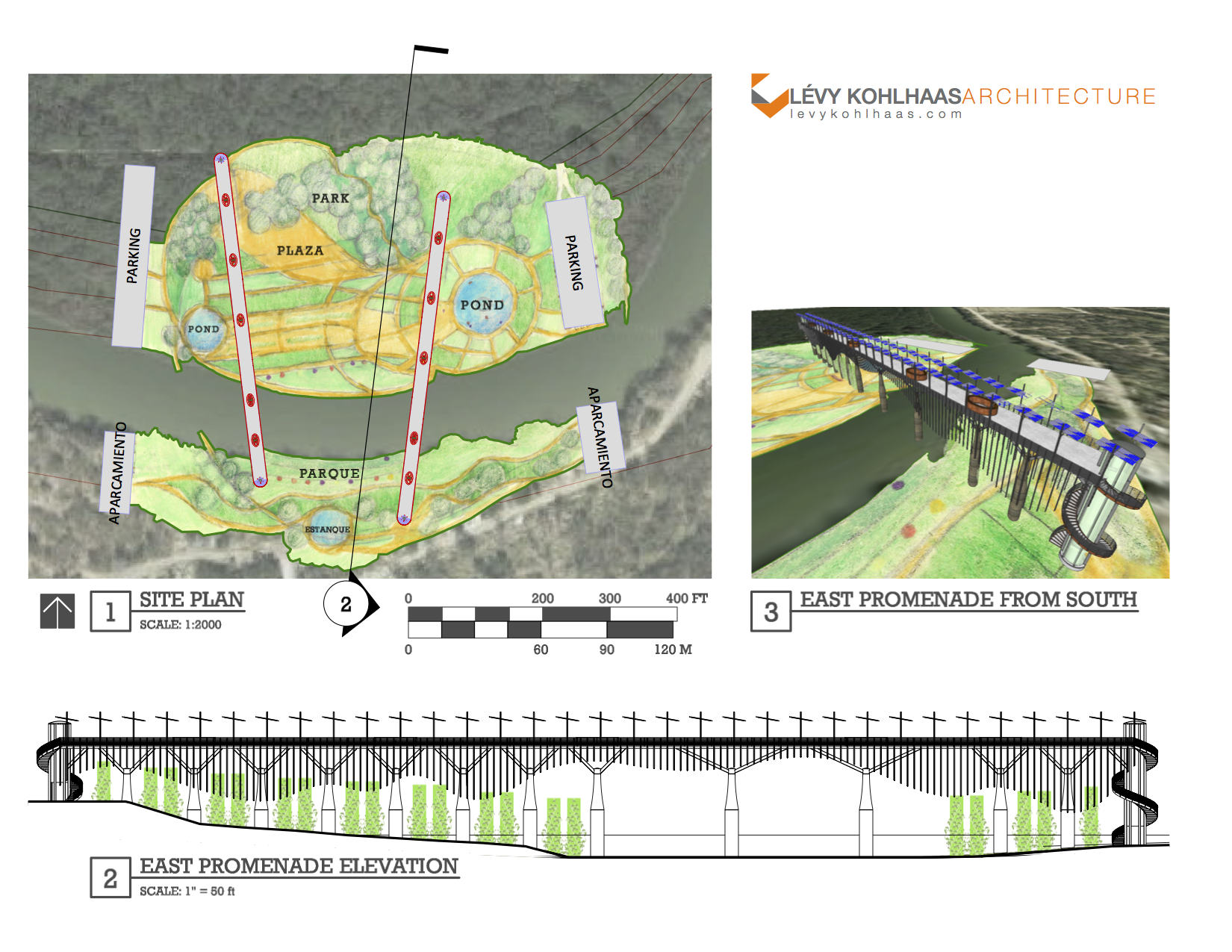Instead of a border wall, some Texans want parks, solar panels or levees
/https://static.texastribune.org/media/images/2017/03/03/TXT-BorderWall-Richmond002.JPG)
Imagine a kindler and gentler hand on the Texas-Mexico border where federal agents on patrol educate and welcome visitors to America. That happens as people from both sides of the Rio Grande meet at the center of a new, shared border checkpoint to play soccer or maybe watch movies near a farmers market.
Or maybe instead of a brick-and-mortar barrier near the river, there is a wall made of vertical solar panels that generate clean energy for both Mexico's and America’s largest border states.
Those are just two concepts that Texans have sent to the Trump administration after the Department of Homeland Security posted solicitations for ideas on how to build President Trump’s “big, beautiful” wall on the border.
Though the ideas range from the burlesque to the practical, the people behind them said keeping quiet is no longer an option if the federal government is dead-set on seizing land and building a controversial and expensive barrier in their own backyard.
“I wouldn’t say it’s satirical. I think our intention was to be perhaps, a little provocative,” said Francois Lévy, the principal at Austin-based Lévy Kohlhaas Architecture who submitted the idea for the multi-purpose border park. “Obviously there are a lot of people complaining right now. We thought that rather than complain we could offer an alternative narrative.”
Levy and his colleagues submitted the proposal after he penned a call to arms on the business networking site LinkedIn in which he urged other designers and artists to take a different approach to voicing opposition.
“Architects and Designers from all over the country and across the globe will send [Customs and Border Protection] daring and innovative design concepts for border installations that promote positive communication between countries, subverting the current authoritarian nationalist narrative,” he wrote.

While Levy’s firm is urging a call to action in protest of the wall, Alfonso Casso said his solar-panel idea is a very real pitch. The government is going to build the barrier regardless, he said, so why not try and make it efficient.
“We’re the most advanced country in the world. We can make it a technological wonder. Why not have it serve a dual purpose? It protects the homeland and it’s part of the comprehensive energy policy,” he said. “Why build another Great Wall of China that’s just going to be another psychological barrier – just another brick in the wall?”
Casso is a former deputy Texas Secretary of State who served under three administrations as the liaison for border affairs. He’s also a former city council member for the city of Laredo. Because of his experience in government, he said, Casso isn’t tackling the issue from an outsider's perspective.
“[The solar wall] does not include eminent domain, does not include environmental waivers, it does not include the [International Boundary and Water Commission]” he said, referring to the agency that enforces binational treaty obligations. [Under current law, any barrier on either side of the Rio Grande may not disrupt the natural flow of the river.]
Casso added that his idea would shave hundreds of millions of dollars off the amount experts say will be needed to build Trump’s wall. Some say the upper end of the estimate exceeds $20 billion. Casso said a solar wall would cost $133 million.
It might also help defuse some of the current tensions over immigration and trade brewing between Washington and Mexico City.
“You’re going to need the cooperation of Mexico to police the border with or without a wall, and if you want to foster binational cooperation this is one way of trying to get them to the table," he said.
As the ideas will likely continue to pour in from across the country, some local leaders are asking the DHS to build on what’s already been done. In a recent op-ed published in the Rio Grande Guardian, Hidalgo County Judge Ramon Garcia reiterated his staunch opposition to the border wall.
But he added that if the Trump administration is going to ignore local and state leaders’ concerns, they could do something useful instead.
“The question is: Do we sit idly by and wait for the government to build a wall anywhere they like, or find a middle ground where there is a definite identified project that can accomplish both border security and improve flood protection?” he wrote.
A potential compromise could come in the form of a levee that provides security while preventing damaging floods in the Rio Grande Valley. A partnership between the county and the federal government agreed to in 2008 called for 50 miles of a border [levee], but only 20 miles was completed.
“If the federal government wants to secure the border, they should invest in our federally-owned levees rather than in constructing another fence along the Rio Grande River,” he said, adding that local taxpayers aren’t going to spend another dollar on the project.
Read more related coverage:
- At the U.S.-Mexico border, scientists say existing fencing is hurting endangered wildlife and warn that a continuous wall could devastate many species.
- None of the 38 Texans in Congress offered a full-throated endorsement of a complete border wall, a position popular with President-elect Donald Trump's supporters, a Texas Tribune delegation-wide survey in December found.
Information about the authors
Learn about The Texas Tribune’s policies, including our partnership with The Trust Project to increase transparency in news.
/https://static.texastribune.org/media/profiles/Julian_gt6QdKD.jpg)